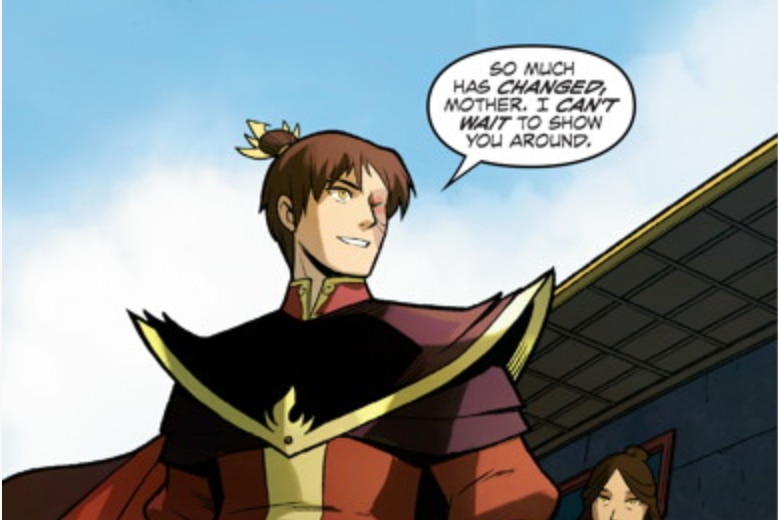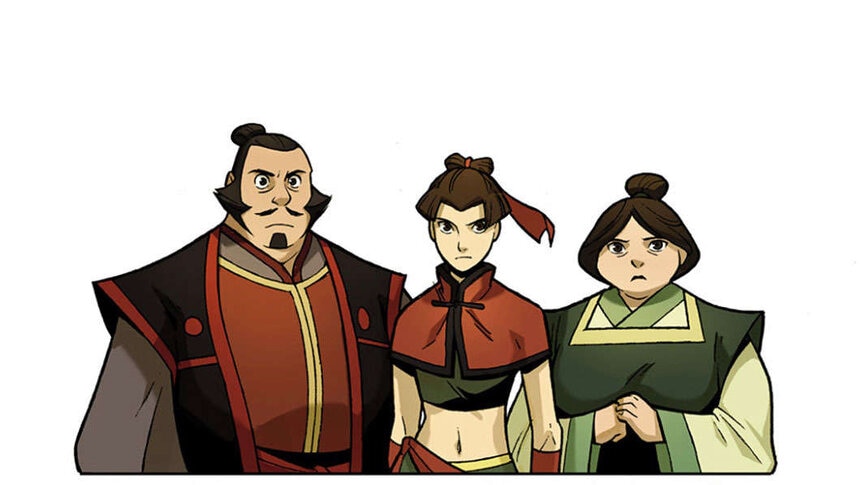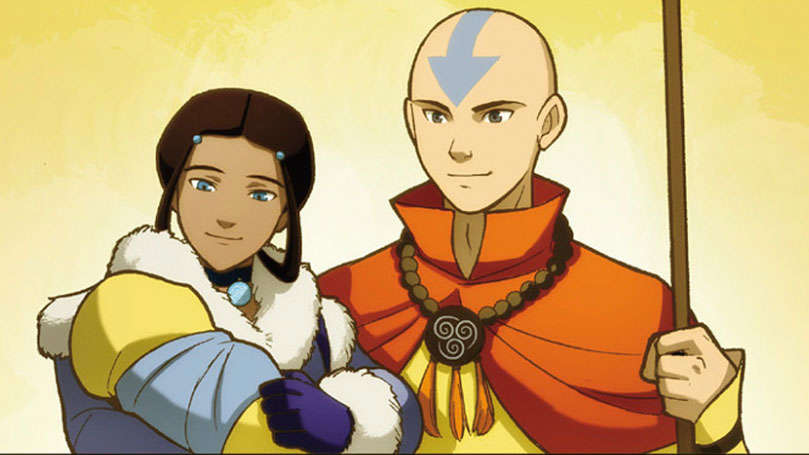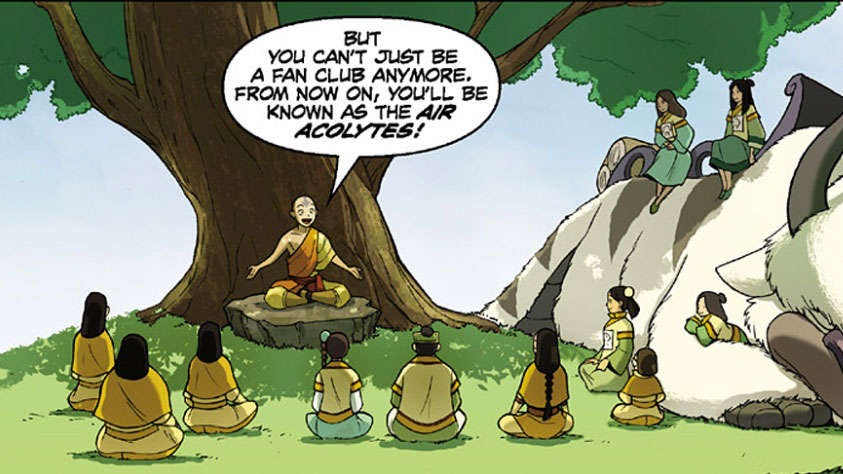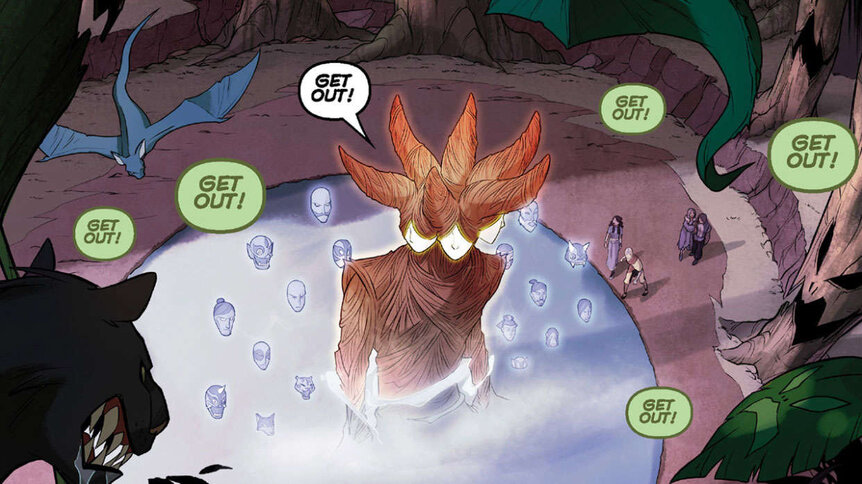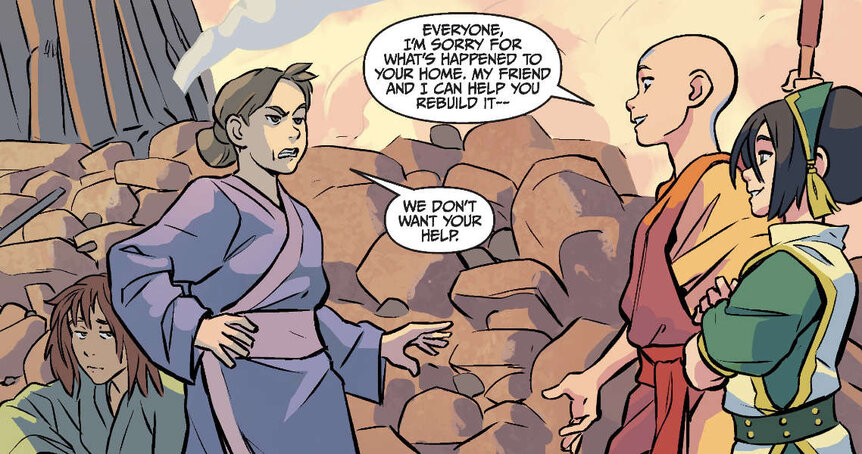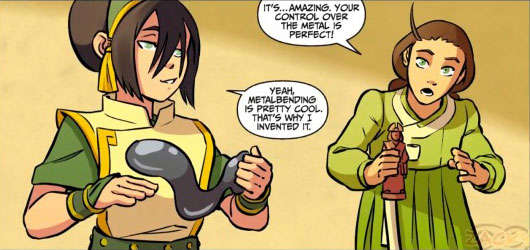Create a free profile to get unlimited access to exclusive videos, sweepstakes, and more!
Before The Legend of Korra hits Netflix, find out what happened in the Avatar comics
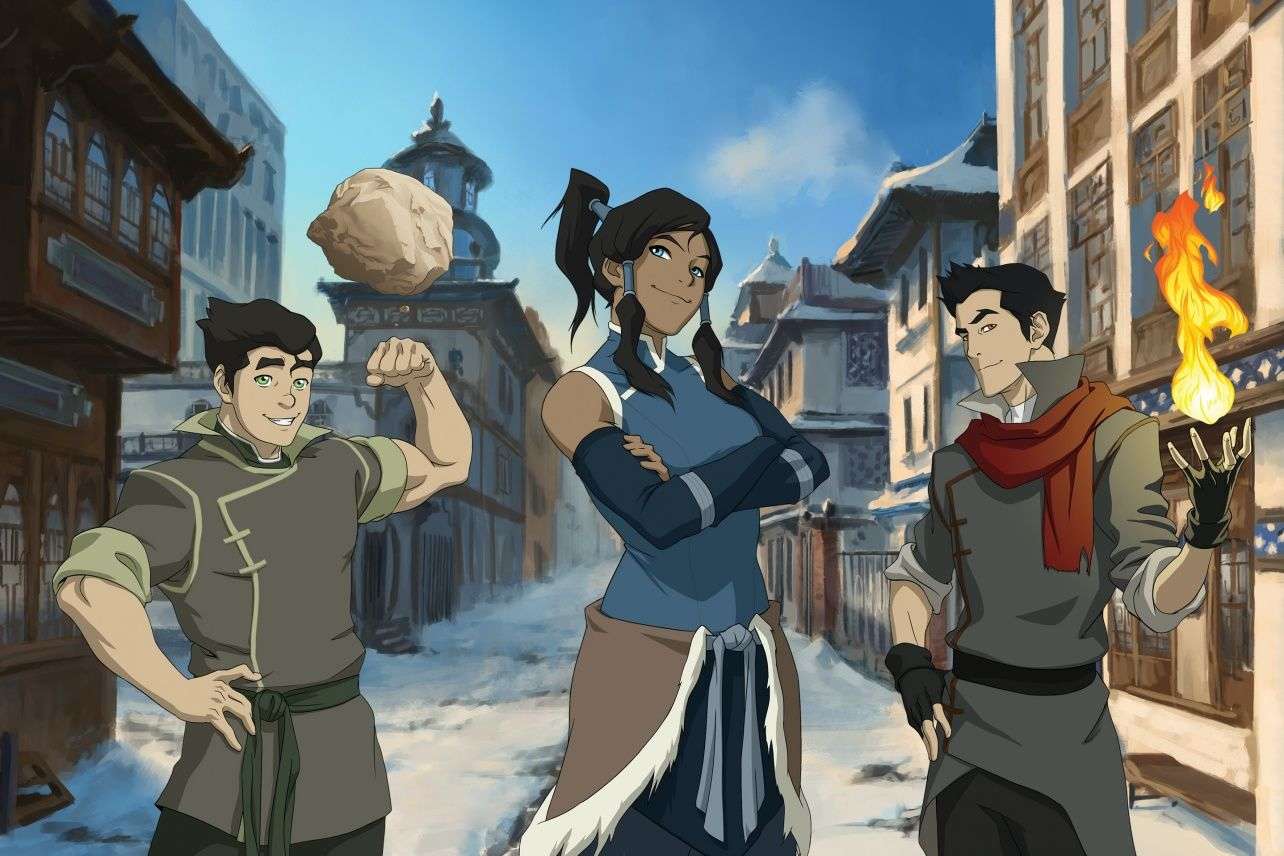
Avatar: The Last Airbender may have been unleashed on Netflix just earlier this summer — further extending the show’s deep legacy and inspiring a new legion of fans — but it’s already time for a next Avatar in the cycle to take the stage, as The Legend of Korra will join the streaming platform’s library on Aug. 14.
The Nickelodeon animated series, which aired from 2012 to 2014, takes place 70 years after Avatar ended. The show chronicles the journey of the latest Avatar, Korra, as she tries to follow in Aang’s footsteps and bring balance to a world that is quickly moving away from it.
And as fans of the original series will quickly discover, the world we see in Korra is a lot different from when Aang and his friends were traveling around and saving the day — which makes the Avatar’s job a lot more complicated, with no easy solutions.
But how did things change so much from the time Avatar ended and Korra began? Well, that story is currently still unfolding in Dark Horse Comics’ Avatar: The Last Airbender sequel comics. So far, the series has seen two sets of writers and artists take up the mantle, working with the show’s creators Bryan Konietzko and Michael Dante DiMartino as they tell the story of what Aang, Katara, Sokka, Toph, and Zuko have gotten up to as they slowly figure out what the future of their world holds now that Fire Lord Ozai has been defeated — while also answering some longtime fan questions along the way.
The first five arcs — titled The Promise, The Search, The Rift, Smoke and Shadow, and North and South — were penned by Eisner Award-winning comic creator Gene Luen Yang (Superman), with art from Gurihuru, an illustration team featuring Chifuyu Sasaki and Naoko Kawano. The next two, Imbalance and the upcoming Toph Beifong’s Metalbending Academy, were written by Faith Erin Hicks (The Nameless City), with art from Pete Wartman and colors by Adele Matera. However, this is just the story so far, with so much of Aang’s story still left to tell. The comics are all set in the immediate years following Ozai’s defeat, with whole decades to go before they bridge the gap between Aang’s tenure and Korra’s.
“I was wary of becoming the kind of property where it was like, ‘Here’s the novelizations and here’s the comics,’ without adding any value to the property,” DiMartino said at this year’s Comic-Con@Home. “That’s why Brian and I have tried to stay as involved as we have while trying to give them the space to put their own spin on things.”
Ahead of Korra’s arrival on Netflix on Aug. 14, here’s everything you need to know from the comics about the world, and how it’s changed since Aang and his friends defeated the Fire Lord.
The Fire Nation is a lot more chill
With Zuko now serving as the new Fire Lord following the end of the Hundred Year War, the Fire Nation has a new set of goals as it moves forward in the world — one that definitely does not include conquering their neighboring nations. (Though it does feature a new annual holiday for National Tea Appreciation Day, instituted by Iroh when briefly takes over running the kingdom for a while, before returning to retirement and running his tea shop in Ba Sing Se, where he’s since developed “bubble tea.”) In fact, almost immediately, Zuko’s focus is on making up for all the pain and destruction caused by his people, as he works to decolonize former Fire Nation settlements in the Earth Kingdom, and also pledges to help the Southern Water Tribe’s efforts to rebuild and develop further.
Of course, not everyone in the Fire Nation is on board with the regime change. A few firebenders, including Mai’s father, form the underground “Pro Ozai Society,” intent on bringing back his father, a ruler they view as “strong,” and who’ll remain unswayed by the avatar and the other nations. Zuko deals with these insurrections as best he can (and with a little help from his friends) before proving that he’s not afraid to own up to his actions and apologize to his people should the occasion require it. Clearly, his approach is somewhat successful, as Korra establishes that, 70 years later, people no longer live in fear of the Fire Nation.
The boundaries between territories aren’t as clear anymore
It’s one thing to look at the clear borders of all four nations in the map in the opening credits, but it’s another to encounter the people living there, especially since a 100 years of Fire Nation rule has resulted in a lot of Fire Nation colonies in Earth Kingdom territories. However, as both Aang and Zuko discover while trying to transfer Fire Nation colonizers back from the city of Yu Dao, the world is shifting away from such clear cut national divisions, and embracing a shared existence, with Yu Dao’s firebenders and earthbenders even working side by side to create metal. Therefore it’s decided that the city shouldn’t be under either Fire Nation or Earth Kingdom rule, but rather, have its own coalition government with members who belong to both nations, a system of government that is more common by Korra’s time.
Aang and Katara become a couple
Yes, the animated series does end with the pair sharing a kiss and acknowledging their feelings for one another, but the comics go on to explore what being a couple would mean for both of them — as benders from two different nations who are now together — and how that could impact their eventual family. (In The Promise, Katara finds some inspiration in the Mayor of Yu Dao, a citizen of the Fire Nation who has married an earthbender, and is father to an earthbender who considers herself a Fire Nation citizen as well.)
The comics also give readers a chance to see what Aang and Katara are like as a couple, both with each other and their friends, which Korra can’t really do as it’s set after Aang’s death.
Air Nomad culture finds a way to live on
If being the Avatar wasn’t enough, Aang has the added responsibility of being the last living airbender as the Fire Nation all but wiped out the Air Nomads during the Hundred Year War. This means it’s up to him to carry on his culture and bring to life traditions that have been forgotten over time — even if people are initially resistant to it. And just because he doesn’t have other airbenders to train (yet), there are other aspects of Air Nomad life for Aang to pass on in the form of their beliefs and lifestyle. Luckily, there are a few “Avatar Fans” who do want to learn more about Air Nomad culture, so he takes them under his wing and dubs them “Air Acolytes.”
The spirit world has even less of a presence than it used to
It’s the Avatar’s job to be the bridge between the human world and the spirit one, but it’s already proving difficult in Aang’s time, with some people — industrialists in particular — not having any respect for old traditions or the spirits that might have inspired them, opting to make a profit instead of respecting the sacred land they go on to build their factories on. More than that, small towns and villages are slowly becoming a thing of the past, with many of them quickly developing into large cities, and expanding into the nature around them without much respect as they proceed to build more tall buildings and factories. Even the Southern Water Tribe, Katara and Sokka's (and eventually Korra’s) home nation, decides to open up their ports for trade and to work with the other nations.
There’s a growing divide between benders and non-benders
The comics chronicle the birth of a few different machines, all of which result in increased productivity in factories, thus getting rid of the need for skilled benders, as machines both do not need to be paid as much as a highly-skilled bender would, and they also don’t take as long to train. This adds to the strain between both groups, with non-benders already still recovering from 100 years of Fire Nation rule, where non-benders often had to deal with the actions of benders, which sometimes resulted in their towns and villages getting colonized and their homes and places of work sometimes getting destroyed because of someone’s bending with no apologies or fair compensation. (There’s definitely a certain Cabbage Merchant who can speak to this!)
But as Sokka explains, machines help even the playing field for non-benders like him and allow them to do jobs that might have previously gone to a bender. So the rise of industrialization isn’t necessarily a bad thing. Still, there are benders who don’t take to this too kindly, as they feel their bending makes them naturally more superior. Sadly, this doesn’t isn’t really a problem Aang is able to fully solve in his time, though it does result in the formation of a joint non-bender and bender police force, with Suki (a trained Kyoshi warrior and Sokka’s girlfriend) teaching non-benders how to chi block, thus temporarily blocking the ability to bend.
(Also, speaking of Sokka, he's also the only original member of Aang's crew to not make an appearance in Korra, having passed away before it began. So the comics allow fans to see what else everyone's favorite boomerang wielder has been up to in the years since, as well as see more of his aptitude for design and invention.)
Metalbending is becoming an established art
After discovering a form of bending that even Aang himself can’t do, Toph decides she wants to teach her newfound skill to others, so she takes over a former firebending academy and recruits a few other students to teach. But because running a school requires some serious funding and she refuses to charge students for her tutelage, enters into a partnership with the factory her father owns, with them sponsoring her academy — yet another thing that’s quite common (especially amongst corporations and benders) all those years in the future.
The Legend of Korra arrives on Netflix on Aug. 14. Avatar: The Last Airbender is available to (re)stream. You can read the first three arcs of the Avatar: The Last Airbender comics as part of The Promise Omnibus, or you can find each of the comics’ arcs (The Promise, The Search, The Rift, Smoke and Shadow, North and South, and Imbalance) collected as individual trade paperbacks for each one.
